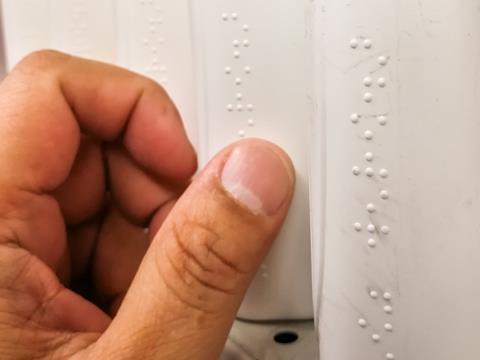
Roland DG has commissioned a study revealing the negative impact of inaccessible on-pack product information on visually impaired consumers, and now encourages brands to embrace Braille, QR codes, and other solutions to ensure complete inclusivity.
The study revealed that 74% of 500 UK adults with visual impairment have picked up the wrong product whilst shopping due to inadequate packaging guidance. Because of this, 51% state that they have felt general disappointment; 39% claim to have wasted money on an unwanted product; 31% have picked up something they cannot eat due to dietary requirements; and 23% have picked up something they are allergic to.
26% of respondents reported that their experiences of inaccessible packaging meant that they had not visited a supermarket within the last month. 31% expressed concern that they cannot access key information about ingredients and allergens due to a lack of Braille or QR codes; and 23% find in-store shopping too stressful.
81% believe that legal mandates should be introduced to force brands to improve the accessibility of their products and ensure that on-pack product information is available for all to read, regardless of their vision. 37% do not believe brands are currently making enough effort to make their packaging accessible.
In response to such sentiments, Roland DG has named social media star, disability activist, presenter and journalist Lucy Edwards as the ambassador of its World Braille Day campaign.
“Imagine a world where every bottle, every box, every tin feels exactly the same,” she said. “Every day I wake up to a sighted world that isn’t made for me.
“10 years ago, I lost my eyesight forever and my independence was gone. In my world, granola could be dog food, baked beans could be tinned pears and jam could be mint sauce.
“I imagine a world where I wake up and it’s not this way anymore. When the world becomes tactile, it finally comes alive for me. I am so pleased to be working with Roland DG to raise awareness of this important issue.
“We must do more to help those with a visual impairment to live an independent and healthy lifestyle. I may not have any allergies but for some with severe allergies, having access to vital information on food packaging could be a matter of life or death.”
“We can see some brands are working hard to make their packaging more accessible, but many don’t go far enough to make product information accessible to those with visual impairment,” adds Stephen Davis, marketing director EMEA and managing director for UK & Ireland. “We, at Roland, are asking brands to investigate ways to fit more accessible information onto all packaging, using a variety of methods from Braille to special QR codes.
“Ultimately everyone has the right to understand what they are buying, and accessible packaging for all is key.”
Origin market lead Steven Brownett-Gale has also spoken about accessible packaging in light of World Braille Day. He underlines the value of Braille and QR codes in enhancing the accessibility of pharmaceutical packaging, with over 2 million people in the UK said to be living with sight loss.
Notable developments in the QR space include the introduction of NaviLens barcode technology across Quorn’s meat-free product range; and the partnership between Zappar and Bayer Consumer Health UK to implement QR technology into Canescool Soothing Gel product packaging.
If you liked this article, you might also enjoy:
The L’Oréal approach to packaging sustainability
The way we talk about plastic needs to change – here’s how to get it right
What steps is Apple taking to make its packaging more sustainable?











No comments yet